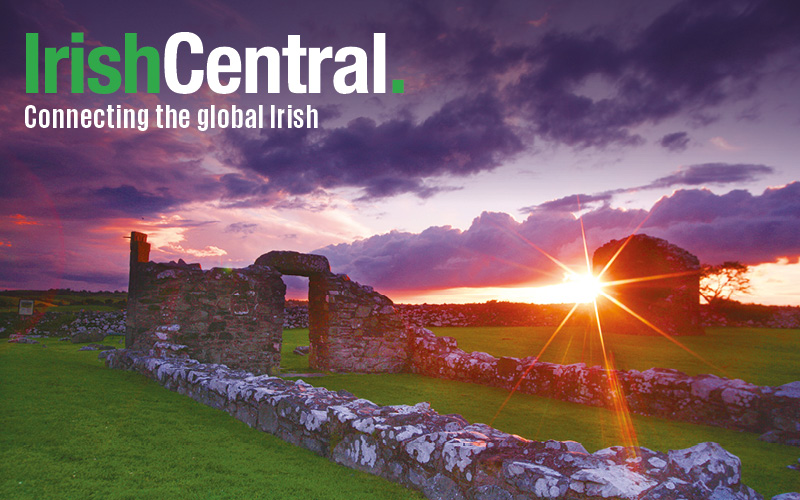The discovery of a pathway within a 7,500-year-old ‘drowned forest’ on the Galway shoreline has been hailed by geologists and historians as it suggests human habitation.
The Irish Times reports that the track could be between 3,500 and 4,500 years old.
It was discovered after the recent heavy storms and may have been built when the sea level was rising and was gradually enveloping the forest that pre-dated Galway Bay according to the report.
NUI Galway geologist Prof Mike Williams has researched the ‘drowned forest’ which comprises of a layer of peat and tree stumps uncovered by the winter storms.
He examined the trackway this week after he was alerted to it by Spiddal resident Alan Keogh who discovered it during a walk on the south-east Connemara shore.
Keogh told the Irish Times that he had heard about the drowned forest and recognised the significance of what appeared to be a ‘symmetrical structure’ below a line of peat.
Prof Williams told the paper: “Together with the Bearna canoe, this is the first evidence of human habitation within these forests and lagoons in this area.
“It could have been built during the late Neolithic or early Bronze age era, and may have been ceremonial or may have been built across wetland which was decaying forest, forming into bog.
“This would make it older than the Corlea togher (trackway), the Iron Age track across the boglands of Longford, close to the River Shannon.”
The report says the Corlea oak road, excavated by Prof Barry Raftery of University College Dublin, is the largest of its kind to have been uncovered in Europe.
Prof Williams added that he is awaiting further archaeological examination of the section on a storm beach near Furbo, looking south to the Burren and Black Head.
The Bearna canoe was discovered on the shore near Bearna by Brian and Rónán Ó Carra in 2002 and is preserved in the Galway Atlantaquaria in Salthill.
it was found to be 4,740 years old when radiocarbon-dated and Ó Carra believes the trackway may be of a similar age.
He said: “The canoe was freshwater, and these people used them for fishing and as a form of transport - like our stand-up paddle-boards.”
http://www.irishtimes.com/news/ireland/irish-news/ancient-trackway-found-within-drowned-forest-in-connemara-1.1750856
The discovery of a pathway within a 7,500-year-old ‘drowned forest’ on the Galway shoreline has been hailed by geologists and historians as it suggests human habitation.
The Irish Times reports that the track could be between 3,500 and 4,500 years old.
It was discovered after the recent heavy storms and may have been built when the sea level was rising and was gradually enveloping the forest that pre-dated Galway Bay according to the report.
NUI Galway geologist Prof Mike Williams has researched the ‘drowned forest’ which comprises of a layer of peat and tree stumps uncovered by the winter storms.
He examined the trackway this week after he was alerted to it by Spiddal resident Alan Keogh who discovered it during a walk on the south-east Connemara shore.
Keogh told the Irish Times that he had heard about the drowned forest and recognised the significance of what appeared to be a ‘symmetrical structure’ below a line of peat.
Prof Williams told the paper: “Together with the Bearna canoe, this is the first evidence of human habitation within these forests and lagoons in this area.
“It could have been built during the late Neolithic or early Bronze age era, and may have been ceremonial or may have been built across wetland which was decaying forest, forming into bog.
“This would make it older than the Corlea togher (trackway), the Iron Age track across the boglands of Longford, close to the River Shannon.”
The report says the Corlea oak road, excavated by Prof Barry Raftery of University College Dublin, is the largest of its kind to have been uncovered in Europe.
Prof Williams added that he is awaiting further archaeological examination of the section on a storm beach near Furbo, looking south to the Burren and Black Head.
The Bearna canoe was discovered on the shore near Bearna by Brian and Rónán Ó Carra in 2002 and is preserved in the Galway Atlantaquaria in Salthill.it was found to be 4,740 years old when radiocarbon-dated and Ó Carra believes the trackway may be of a similar age.
He said: “The canoe was freshwater, and these people used them for fishing and as a form of transport - like our stand-up paddle-boards.”




Comments